ANIMAFEST SCANNER XI
Symposium for Contemporary Animation Studies
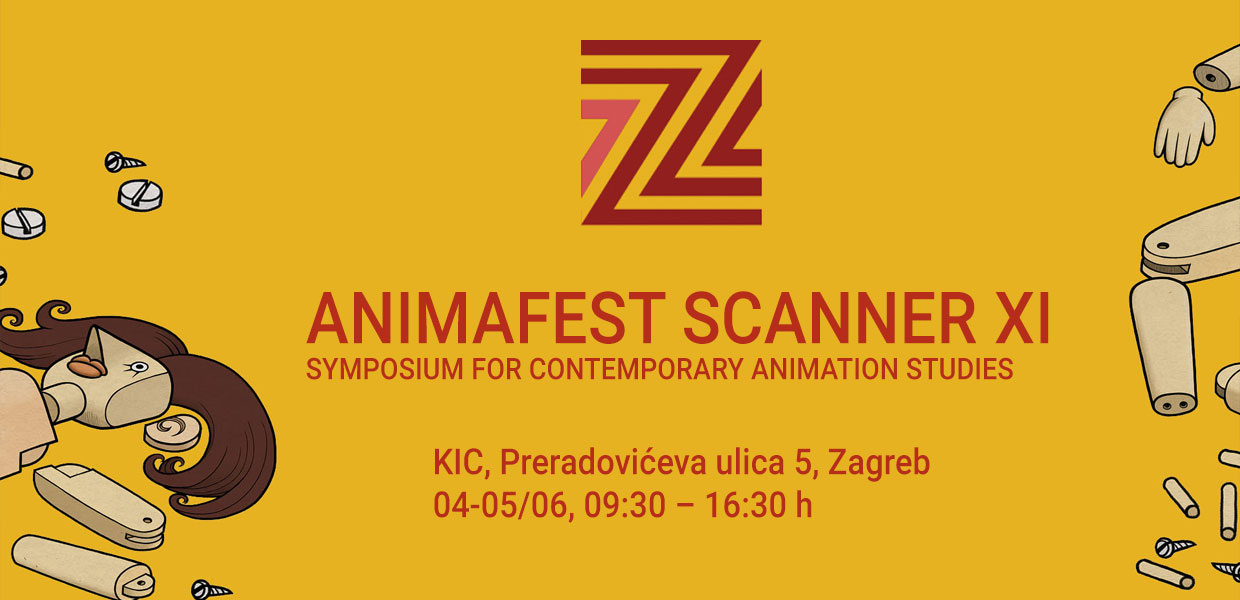
The 11th edition of the Symposium for Contemporary Animation Studies Animafest Scanner XI aims to create synergy of theoretical and practical discourses and stimulate exchange between filmmakers and scholars. As the worldwide animation studies are rapidly growing and evolving in recent years, catching up with the expanding field of animated films, Animafest Scanner symposium is again at the frontline of the discourse and the interaction of theoretical and practical approaches to animation.
The symposium is held in association with the World Festival of Animated Film – Animafest Zagreb.Over the course of its fifty-two-years history, the festival has given a stage to different animation forms and formats in competition and non-competition environments, presenting a worldwide selection of auteur, experimental and mainstream animated films in various programs.
The speakers will focus on the following subjects: Studying Early Animation (Tracing Some Basics), Role of Editor and Editing in Animated Film, Humor in Animation, Authorship in/of AI Animation.
In English, open to public.
04/06 TUESDAY
09:30 Welcome & Introduction
PANEL 1 – Studying Early Animation (Tracing Some Basics)
Moderator: Nikica Gilić
PANEL 2 – Role of Editor and Editing in Animated Film
Moderator: Andrijana Ružić
05/06 WEDNESDAY
09:30 Introduction
PANEL 3 – Humor in Animation
Moderator: Hrvoje Turković
PANEL 4 – Authorship In/Of AI Animation
Moderator: Holger Lang
PRESENTERS
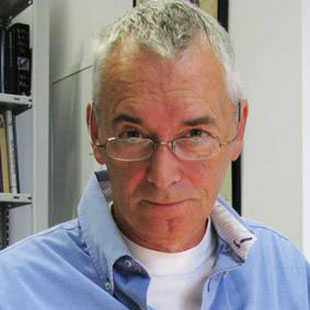
Ingo Petzke
KEYNOTE: Tracing Back to Some Basics of Analogue Animation
In our times of digital inundation and consequential digital image inflation, it has become increasingly difficult to remember what animation is. Once upon a time it started as a film photographed, single frame by single frame, onto a celluloid strip. This in contrast to shooting by letting the camera roll. Or simply pressing a button on a control panel, for that matter.
This lecture aims to look back and remember the qualities of analogue film:
- Firstly, by looking at how still photography is – falsely – perceived as moving. Nothing is moving on the screen, as we all know. Movement is simply the result of our most unreliable organ of perception – our eyes.
- And secondly – as Helmut Herbst famously claimed – examining how the ‘resistance of the (film) material’ could be overcome.
With the loss of the analogue film strip to digital files, we also lost the enthusiastic joy of discovering, which once upon a time was prevailing: How have these imaginary visuals been created? How could this be achieved? The question was always ‘how’ – not ‘what’ or ‘why’.
In the olden days, surely not everything was better. But maybe there had to be more depth of thought? The makers needed more manual producing skills, more creativity, to be able to achieve their goal of a film matching their vision as perfectly as possible.
This is a reminder of the strong ties linking experimental and animation film. Some outstanding animation films are experimental – and vice versa. We will have a look at some great examples.
Lecture accompanied by seven film excerpts.
holds titles of Professor Emeritus (Film) at Technical University Würzburg, Germany;Associate Professor, Bond University, Australia; Adjunct Professor, James-Cook University Townsville, Australia;Guest Professor, University of the Philippines, Diliman, Metro Manila, Philippines. He is a filmmaker, curator, festival founder, distributor, and author of 15 books and numerous articles. He has held lectures, seminars, workshops in 34 countries around the world.
He was supervisor of more than 2,000 student films/videos, including approximately 70 films as Diploma/Bachelor/Masters final works. His research focus is history of experimental/avant-garde film and Australian cinema.

Robby Gilbert (United States)
Researching and Restoring Early Chromolithographic Film Loops
Chromolithography, which had been used in print media since 1837, was applied to 35mm film extensively from 1897 into the early part of the twentieth century. The process was used primarily as a way to produce short, animated sequences largely marketed as children’s amusements to be projected using modified kerosene magic lanterns fitted with hand cranks, simple shutters and Maltese cross systems. As such, they allowed viewers to enjoy short ‘cartoon’ sequences, often in color, that looped. Many sequences were traced from live action, but a significant number were drawn without reference and mark an important development in moving image and animation application. Because these loops were marketed as toys, they often did not survive the repeated viewing and rough treatment of their young projectionists. In addition, they have traditionally been thought of as ‘novelties’ and may not have been taken seriously by film historians and preservationists. But the same could be said of other so-called ‘proto-cinematic’ devices and objects, and yet many of those items—zoetropes, praxinoscopes, etc.—are documented relatively thoroughly. These short chromolithographic films are also rare artifacts from the earliest years of cinema, and a few efforts are beginning to be made to study, preserve, and catalogue these items and their history. The most widely known manufacturers of these films were Ernst Plank and Bing of Germany and The LaPierre company from France, toymakers who specialized in marketing magic lanterns to children. Foreseeing the demise of lantern entertainment as the result of the new medium of film, they designed and built a number of clever contraptions that were hybrids of lantern and film projectors. The film loops, printed in numbers using the chromolithographic process, were sold with these devices. In the U.S, A.C. Cummings Co. and Keystone also built robust 35mm toy projectors during this period, but they seem to have been marketed with short clips from popular films of the day. To date, concise information regarding manufacture, dating, and cataloguing these loops is as rare as the films themselves.
Robby Gilbert is an animator, illustrator, and Assistant Professor of animation and the Moving Image at Rowan University. He has written several articles on animation for both print and online journals and writes a monthly interview column for ASIFA East. Gilbert is an avid collector and scholar of pre-cinematic and early moving image optical devices. He directs the Moving Image Research Lab at Rowan University where he engages students with the research and archiving of rare 19th century artifacts. Currently, Gilbert is writing a book on the history of New York Animation for Palgrave MacMillan.
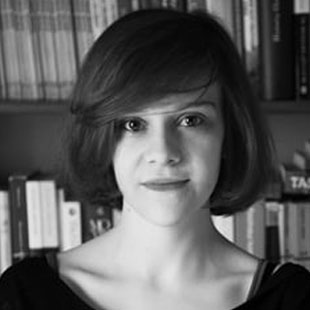
Olga Bobrowska (Poland)
From Pure Cinema to Narrative Abstraction. Animated Film as a Theoretical Concept
This presentation will start with a brief recapitulation of the beginnings of Polish animation; however, the main research focus will be on the emerging and rapidly developing theoretical reflection regarding animated film and its potencies. The corpus of Polish animated films made before 1945 is regrettably lost, but the writings of 8 various film and culture theoreticians, avant-garde artists, and intellectuals interested in animation remain an available and inspiring source material that has not been yet widely discussed in English language. In many respects, the theoretical concepts and approaches presented by authors such as Karol Irzykowski, Stefania Zahorska, Jalu Kurek, or Jan Brzękowski, were aligned with the main currents of the European avant-garde energizing the modernist borderlands of abstractionism, futurism, constructivism, surrealism, and dadaism. It will be argued that the writings on animation of the period, however ramified and diverse, reveal certain common denominators in viewing the form and function of the animation medium. The postulates posed called the filmmakers to pursue an ideal of an ‘absolute’ (pure) cinema, forms of synergy that would enable creation of ‘visual music’ and ‘visual poetry’, or modes that would transpose qualities of abstract painting into motion pictures (e.g., Irzykowski claimed that hand-drawn animation was the ‘true cinema of the future’). Especially emphasized will be the concerns related to a distinctive, structural approach to storytelling in abstract animation, which was formulated in the course of the 1920s’ debates (Jalu Kurek, Jan Brzękowski). The heritage of early Polish animated film theory continuously inspires the subsequent generations of Polish animators and scholars (most notably, Marcin Giżycki), and it deserves wider acknowledgment.
Olga Bobrowska, PhD, is an animated film scholar, Assistant Professor at the Institute of Journalism and International Relations (IDSM) of the UKEN University in Kraków (Uniwersytet Komisji Edukacji Narodowej) (Poland), co-founder and festival director of StopTrik International Film Festival (Maribor, Slovenia / Łódź, Poland), film culture activist and curator. She authored two monographs published by the CRC Press (Chinese Animated Film and Ideology, 1940s-1970s. Fighting Puppets, 2023; Chinese Animated Film and Ideology. Tradition, Innovation, and Interculturality, 2024). She co-edited books Obsession, Perversion, Rebellion. Twisted Dreams of Central European Animation (2016), and Propaganda, Ideology, Animation. Twisted Dreams of History (2019). She is a permanent contributor of Zippy Frames.
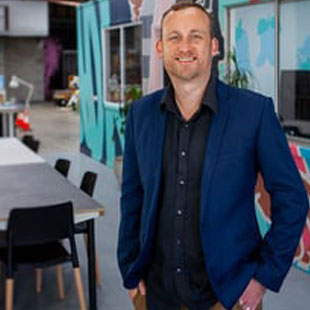
Jack McGrath (Australia)
Miniaturised Materialities: Traces of Animation’s Physical Past
The history of animation is the history of the miniature. To re-create the world, we first needed to miniaturise it. Across time and cultures, miniature figurines have served as important storytelling and metaphorical devices, and filmmaking has undergone a process of miniaturisation: transitioning from material techniques to digital. Animation began its material journey in the form of miniature figurines, tracing their origins to early human history. Paleolithic cultures carved small figurines from stone of metaphoric significance, Hellenistic Babylonians used figurines to describe and reinforce cultural roles through materiality and story, and Andean people carried carved objects called conopa that were believed to influence full-scale phenomena. Tracing the history of cinema, magic lanterns contained tiny paintings on glass slides that were projected on a grand scale, paving the way for the mutoscope, zoetrope and the praxinoscope. These paintings were in effect, static miniatures coming to life in real time. Photography itself went through a process of miniaturisation from camera obscura to glass plate negatives to celluloid film, the camera evolving from a cumbersome apparatus to a portable item. The rise of celluloid and the mechanisation of the motion picture camera was the further miniaturising of animation: thousands of paintings on cells could be photographed and thus shrunk to rolls of celluloid film. The digital was the final act of miniaturisation, shrinking animation to a scale of digital bits and thereby rendering it immaterial. Baudrillard argues that with miniaturisation through digital microprocessing, ‘there is no longer an ideal principal of these things on human scale’ in a ‘disappearance of the real’. Miniatures, though long outgrown by the film and VFX industry, now appear in contemporary film and television, and stop-motion feature films are more prevalent than ever: their appeal entangled with the materiality of the miniature. Animation’s material journey from its roots in miniature figurines through to pre-cinematic devices and the loss of the material to the digital, this paper examines the dialectical relationship between miniaturisation, materiality and the human-scale experience.
Jack McGrath is a filmmaker, stop-motion animator, director and lecturer with 20 years’ experience producing visual content. McGrath has a background in Fine Arts from the University of Sydney and has lectured in film and animation for a number of years at the University of Sydney and The University of Technology Sydney. He has written and directed a wide range of short films that have been screened around Australia and internationally. Jack is a lecturer in animation at the University of Newcastle, Australia. His research investigates the liminal zone between traditional stop motion animation and emerging digital technology. With his background in stop motion animation, Jack is interested in hybrid animation workflows and the potential for incorporating and merging new technology with traditional animation.
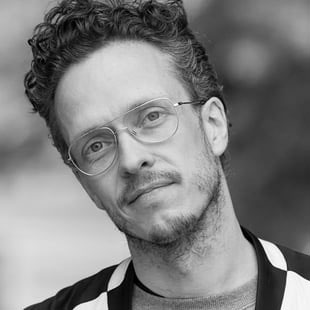
Max Hattler (Germany / Hong Kong)
Revisiting Graphical Sound
This animation research and teaching project explores novel, digital approaches to the old, analogue technique of optical sound. Taking a media archaeological approach to understanding new and emerging media through a close examination of the past, it revisits the optical or photographic soundtrack of the early cinema period as well as related avant-garde experiments in graphical and drawn sound generation by animators such as Norman McLaren and Oskar Fischinger. The project seeks to inspire the next generation of filmmakers in the field of experimental animation by studying past analogue experiments and exploring new opportunities for creative expression. It aims to reignite interest in graphical sound experiments, where sound is created directly from the image, by using contemporary digital tools. By designing specific visual shapes and movements, sounds, tones, and rhythms can be composed visually and strong synesthetic experiences can be crafted. This presentation discusses the challenges and successes of working with graphical sound in the digital realm by examining a range of abstract animation films which were developed as part of this investigation. Part arts-based creative research, part teaching and learning project, this undertaking was conducted together with postgraduate and undergraduate students and research assistants at the School of Creative Media, City University of Hong Kong. It was supported by the Teaching Development Grant ‘Experimental Animation with Optical Sound’ (6000859) and the Teaching Excellence Award Grant ‘Graphical Sound Animation’ (6989043). One of the resulting optical sound films, O/S (2023), directed by Max Hattler, recently received the First Jury Prize at the Punto y Raya Festival. The jury remarked that the film ‘follows experimental moving image tradition, whilst also bringing something new and fresh.’
Max Hattler is a German video artist, experimental filmmaker, animation researcher, curator and educator who works with abstract animation, video installation and audiovisual performance. After studying at Goldsmiths and the Royal College of Art, he completed a Doctorate in Fine Art at the University of East London. Hattler’s work has been shown at festivals and exhibitions worldwide, receiving awards and mentions from Annecy Animation Festival, Ars Electronica, Montreal Festival du Nouveau Cinema, Punto y Raya Festival, Cannes Lions, London International Animation Festival, and many others. He has presented papers at the Society for Animation Studies Conference, CONFIA in Portugal, and Animafest Scanner. Hattler serves on the board of directors of the iotaCenter and the editorial boards of Animation: An Interdisciplinary Journal and Animation Practice, Process & Production. Max Hattler lives in Hong Kong, where he is Professor at the School of Creative Media, City University of Hong Kong.

Iva Kraljević (Croatia)
Do We Really Need Film Editors in Animated Films?
It is a common misconception that editors in animation films only fine-tune the rhythm of individual shots to create a sense of flow in a movie. Often, however, it is more than just assembling the images together into a whole and perfecting the rhythm. An editor can offer a new perspective and work on improving the accents in the dramaturgy of the film. The director /animators do not necessarily have knowledge of film grammar and syntax, so while the footage works as individual shots, it has some problems conveying the idea to the audience. Oftentimes the film does not happen and interconnectedness of created elements remains the director’s wishful thinking. So, editing is above all, a reality check, a prioritising process. Beyond technical proficiency, animation editors must possess a keen understanding of storytelling principles and visual language. They must interpret the director’s vision and translate it into a coherent and compelling narrative or non-narrative structure. Editors use the spatial relationships within the image to convey information, direct the viewer’s attention and establish the geography of the narrative, or, should we say, structure. It is through the temporal dimension that events unfold, characters develop and stories progress and by understanding the nuances of character development, thematic resonance and narrative arc, editors can enhance the quality of the final product and transform a sequence of frames into a unified, cinematic experience. It is extremely important that the editor is involved in the process from the storyboard and animatic onwards, as their skills can, pragmatically speaking, save significantly on production, removing unnecessary elements from the outset.
Iva Kraljević is an editor and cinematographer of documentary, feature, animated and experimental films with a special interest in socially engaged topics and media experiments. Kraljević graduated in sociology and philosophy.
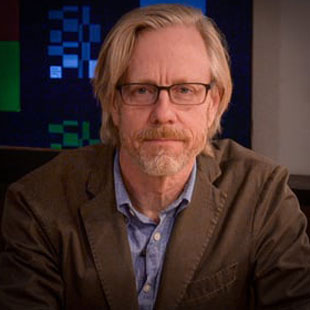
Bill Kinder (United States / France)
Beyond Words
This paper considers the editorially constructed human voice in animation in light of both current production practices and recent scholarship. An example-rich survey of contemporary approaches to editing vocal performance for animation will recontextualize Walter Murch’s notion of encoded sound (2005), Michel Chion’s disembodied voice (1999), among others. Film editors were aware of the utility—and the threat—to believably ‘alive’ performances posed by digital tools long before Large Language Models and deep fakes. What are they? Can foregrounding current practices in the editing of the voice inform our response to new technologies, including generative AI?
Bill Kinder, is a filmmaker and writer based in Paris. He is the co-author of Making the Cut at Pixar: The Art of Editing Animation, which describes the role of film editors at the studio, where he founded the Editorial & Post Production department, which became known internally as ‘the hub of the wheel’. Kinder began his career producing an Emmy®-nominated documentary, news, and sports; editing commercials; and creating experimental art and non-fiction films. Kinder was then the Director of Post Production Facilities at the birthplace of electronic cinema, American Zoetrope in San Francisco. Today he leads creative talent in various studio consulting and producing assignments, which have included: an animated series; an animation startup in Vietnam; a ‘must-see’ independent feature film; and essay films exploring cinema culture.
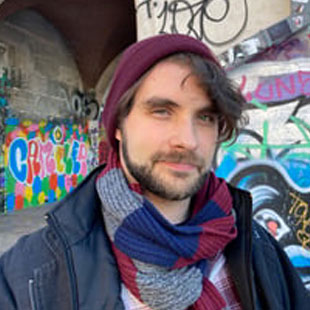
Samuel Baptista Mariani (Brazil)
Fabricating Filmic Spontaneity for a Contemporary Audience: The Editing of Bob Spit: We Do Not Like People
Bob Spit: We do not like people was the second stop-motion animated feature produced in Brazilian history and the first to address adult audiences with this technique. It introduced an unprecedented format in the country, achieving significant public acclaim and festival recognition. The film employs an investigative documentary approach, utilizing metalanguage to foster character spontaneity, a technique Coala Filmes has explored since adapting Angeli’s work in 2008’s The Rê Bordosa Dossier. This reflexivity is historically familiar to documentary theorists or to animated documentary favourites such as Aardman’s Creature Comforts and its humorous recontextualizations. However, 2021’s Bob Spit distinctively fabricated its behind-the-scenes narrative and its conspiratory relationship to its viewers (as conceptualized in cinema comedy theory) during the editing process, and mostly by repurposing produced materials. In addition to that, editor Eva Randolph and director Cesar Cabral would consider a kind of spectatorship for the film that aligns with Rancière’s Emancipated Spectator (2008), by creating levels of spectatoriality that even the characters within would permanently trespass, facilitating transposition of roles between author and spectator. In face of that, this research proposes a careful analysis of the editing process of the film in question, considering, firstly, the reality effects explored for its fabricated-documentary approach, deriving a place for the unusual status of reality in stop motion animation since Barthes’ ‘Death of the Author’ argumentation and Jean-Louis Comolli rebranding of the auto-mise-en-scène and, secondly, considering the changing relationship with the contemporary spectator, incorporating Sybil DelGaudio’s animation self-evidence concept and Jesús Martín-Barbero’s critique on Latin American media’s departure from traditionalist linear communication. Four years working at the editing room of the film production provided the author of this presentation with a unique insight into its processes and its influence on and from contemporary Latin American contemporary viewers.
Samuel Mariani is a Master’s student of media and audiovisual processes at the School of Arts and Communications at the University of São Paulo, member of the research group MidiAto: Language Studies Group on Media Practices. He works as an animator, editor and AI explorer for Coala Films, for the Campinas’ Animation Nucleus and for The International Animation Day of Brazil. He acted as editor and DOP for the short Flesh (2019), as assistant editor and 2nd AD for the feature Bob Spit: We Do Not Like People (2021), as lead editor and stop motion animator of the second season of the TV series Angeli The Killer (2021) and puppeteer and lead editor of the TV series Gildo (2024).
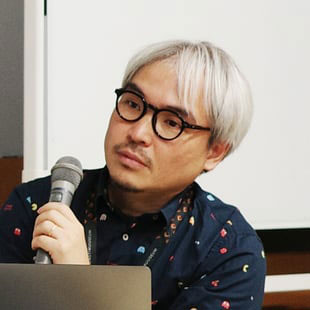
Akira Arimochi (Japan)
Pärn’s Humor: Talking in the Fog
‘Unfinished caricatures possess the elements of good animation’, ‘There are no coincidences in animation.’ These are the words of Priit Pärn, the leading figure in Estonian animation. Estonian animation has gained international recognition through Pärn’s work and his teaching. His works contain narratives that compel us to think. The characteristic feature of his work may be cathartic humor to confront the absurdity of society. These thoughts led to the question of the origins and purpose of his humor. Based on these thoughts, I made the following hypothesis; his humor reflects his experience as a caricaturist, theatre artist and surrealist artist in the Soviet society. Then, his humor aims to enrich everyday ways of seeing and thinking. His humor is displayed in a process: (1) He generates ideas by enriching his way of looking at and thinking about things, (2) He arranges these ideas through logical, constructive thinking, and (3) In doing so, he deliberately blurs the topics, as if conversing in a fog. The viewer of his work is compelled to walk and wander through the fog. As if a child takes a detour and wanders off on the way home from school. It is an important play to know the world and encounter new things. His remark, ‘There are no short and correct answers’, speaks volumes to this. To substantiate the hypotheses, (a) his statements and activities were analysed through an oral history, and (b) the content of his animation education at the university was analysed. With these, I will try to clarify as much as possible the quality of his humor. If answers to Pärn’s question about humor can be presented, we may learn more about the relationship between animated narratives and humor created in the Soviet society. We may also learn how animated humor can enrich the viewer’s thoughts. We hope these will help to understand the relationship between ethnic social change and the stories created by animation directors.
Akira Arimochi was born in 1977 in Japan. He is Professor of New Media & Image at the Aichi University of the Arts. He was a visiting researcher at the Estonian Academy of Arts for two years in 2012. In 2019 he obtained a Ph.D. from the Tokyo University of the Arts. His research focuses on the history of animation and comparative art studies, with special interest in Estonia. He has received several grants for his research and has conducted a total of 21 oral histories. He is fellow of The Japan Society for Animation Studies and the Japan Society of Image Arts and Sciences. He also has been showing his animations under the artist name ALIMO. His activities involve both historiographical theory and creative practice. His film Juxtaposed LAND (2023), a mixture of everyday life, allegory, and philosophy, world premiered at the Animafest Zagreb (2023).
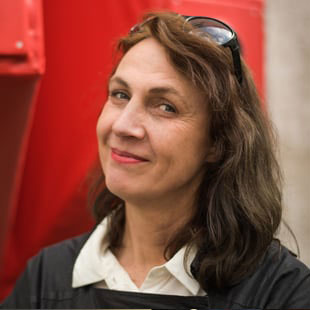
Martina Tritthart (Austria)
Looking For a Job at the End of the World. Humor in the Adult Animated Comedy Miniseries Carol & the End of the World: A Case Study
Dan Guterman’s new adult Netflix miniseries Carol & the End of the World, which premiered in December 2023, features subtle humour that combines situational comedy with self-deprecation and black humour. The absurd storyline, combined with a casual 2D aesthetic, develops a delicate, multi-layered humour that may be understood as a new phenomenon in the context of the current global situation, in particular the wars taking place right now, but also the immediate aftermath of the pandemic. Paul Wells’ list, titled as the chapter ‘25 ways to start laughing’ (Wells 1998) could be updated and extended with this example. The apocalyptic ten-part miniseries is reminiscent of Lars von Trier’s feature film Melancholia (DK/SE/F/D, 2011) in its portrayal of Carol’s phlegmatic character, brought to life with the dull monotonous voice of comedian Martha Kelly. Apart from the similarity in the depiction of the threatening planets Melancholia and Keppler colliding with Earth, there are hardly any other parallels. Whereas in Don’t Look Up (US, 2021) the inevitable collision is estimated at six months and 14 days, in Carol & the End of the World it is seven months and 13 days, so people know exactly about the limited time they still have to live. The central importance of friendship is reminiscent of the feature film Seeking a Friend at the End of the World (US, 2012), but without the desire for a conservative heterosexual romantic relationship. In both the series and the film, there is a comparable description of the changed behaviour of the predominantly Western consumer culture, which is abandoning its former working life in favour of an excessively hedonistic lifestyle. The series Carol & The End of the World is an allegory of the awareness of one’s own mortality and how one might cope with this understanding. The questions raised are of profound philosophical nature. What do we do with our lives when we are aware of the soon-coming end? The thoroughly moral answer to this question in the series is love for the routine of everyday life, presented with pathos and with a fresh kind of humour that extends the list of types that Paul Wells proposed more than 25 years ago.
Martina Tritthart works as an artist, curator and researcher in Vienna and Klagenfurt, Austria. She received the Hubert Sielecki Award for her abstract animation film solar mechanix 1.1. Martina Tritthart is on the Board of the Künstlerhaus in Vienna and one of the two curators of its ‘Free Cinema’ program. She completed her doctorate on ‘Light Spaces – Spatial Models of Perception’ at the Graz University of Technology and has been teaching since 1999. She is currently a postdoctoral assistant at the University of Klagenfurt, in the Visual Culture unit.
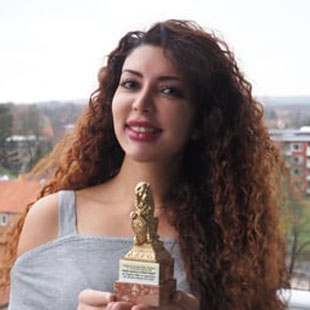
Farzaneh Omidvarnia, Mehrdad Sheikhan (Iran / Denmark)
Satire and Political Commentary in Iranian Animation
Subversive humour and political commentary converge within Iranian animation, creating a dynamic landscape where satire serves as a strong tool for questioning authority and amplifying dissenting voices. In a society marked by censorship and societal constraints, Iranian animations skilfully utilize humour to navigate the intricacies of the culture with wit and originality. This transformation elevates animation to a platform for political critique, employing parody and irony to convey social commentary and challenge the entrenched power structures. Iranian animation often functions as a reflective mirror of societal consciousness, offering insights into the prevailing socio-political setting. Through intricately woven narratives, the layers of humour are blended into the animated works, defying societal norms and advocating for change. In this exploration, the portrayal of gender in Iranian animation’s humour is closely examined, analysing the depiction of women and the dynamics of gender relationships within animated narratives. The examination reveals how Iranian animations leverage satire and wit to confront patriarchal norms or promote gender equality, and amplify the voices of marginalized communities, also challenging prevailing gender stereotypes and advocating for inclusivity and empowerment. In Iranian animation, various techniques circumvent political censorship to convey subversive messages effectively. Utilizing creative storytelling and symbolism, directors navigate the boundary between dissent and compliance, utilizing animation as an instrument for social change and cultural expression. This interdisciplinary study shows fresh perspectives on the dynamic interplay between humour, politics, and cultural expression within Iranian society. It underscores the commitment of Iranian animation directors to challenge prevailing paradigms and stimulate critical discourse through storytelling. Through their narratives and artistic choices, these directors push the boundaries of animation, reshaping societal narratives and provoking thought on a global scale.
Farzaneh Omidvarnia is a multifaceted artist, sculpting fabric and crafting short stories, with exhibitions across Europe and Iran. She ventured into filmmaking in 2017, winning awards for To Be and Song Sparrow. Broken is her latest film. She earned her PhD in Design from Denmark and currently works as a postdoctoral researcher.
Mehrdad Sheikhan is an Iranian filmmaker who is active in documentary filmmaking and animation. He has been producing animation professionally since 1995 and has been active as an idea developer, screenwriter and director. He started making TV commercials and industrial films, and started documentary filmmaking as a researcher, producer and director in 2003. Mehrdad’s works have received many awards from local and international film and animation festivals. He has also been a member of the board of directors of Iran’s ASIFA Association, the Iranian branch of the International Animated Films Association.
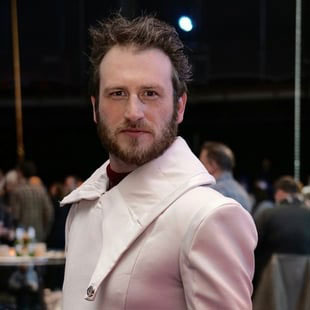
Jeremy Speed-Schwartz (United States)
Discovering Queerdom and the Mystery of the First LGBTQ Animated Comedy
LGBTQ+ representations in animation exist throughout the history of cinema, but often marginalize queer characters as brief jokes or put-downs. By 1940 many of these representations had ceased completely due, in part, to the Hayes Code in the United States. A memo written in response to an animated short in 1934, code enforcer Joseph Breen wrote ‘in this office, we insist that any reference whatever to effeminate types be taken out.’ Increasingly authoritarian governments in many countries with animation industries further limited expression of homosexuality internationally. Animation’s growing association with children as an audience through the 1950s and 60s further made queer representations scarce. With the end of the Hayes Code in 1968, there was greater allowance for representation of queer characters in American-made animation. This coincided with a rise in film festivals focused on animation, which presented an opportunity for independent shorts to find an audience looking for experimental, political, and subversive works. In the wake of the Lenny Bruce-narrated short Thank You Mask Man (1971), and Fritz the Cat (1972) new forms of animated comedy emerged that deconstructed society’s views of gender and sexuality, often based on improvised or live-recorded soundtracks. Queerdom (1978) reflects these trends while centralizing a queer character for the first time in animation. The short features a man questioning his sexuality and beginning a relationship with another man, all told with a stream-of-consciousness narration. The film’s credits are deliberately obscured, making it difficult to identify everyone involved in production. This paper uncovers the production crew behind Queerdom and the often-unseen connections between the commercial animation industry, standup comedy, and pornographic cinema. The production of Queerdom traces a path from Pyongyang to New York to Zagreb, and tells a story of outsider art, politics, and edgy comedy that run through Queerdom’s 20-year production history.
Jeremy Speed Schwartz is an animator, historian and interactive artist. He is the director of The Museum of Animation, an organization dedicated to teaching the techniques and history of animation in all its various forms. As a founding member of the art collective ‘The League of Imaginary Scientists’, Jeremy has created animated and interactive work for the Museum of Contemporary Art in Los Angeles, The Art Museum at the University of Memphis, and the Sundance Institute. Jeremy is the co-author of the upcoming edition of A New History of Animation from Thames and Hudson. He lives in Atlanta, GA and teaches at Kennesaw State University.
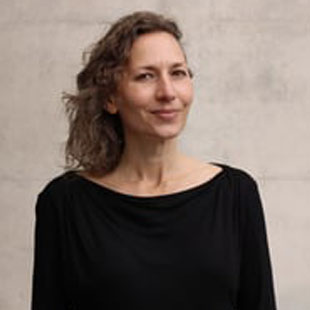
Melanie Beisswenger (Germany)
Expanding the Collaboration of Artist and AI in Animation Production with LoRAs
The growing role of generative AI in animation production necessitates a re-evaluation of creative authorship. This talk delves into the collaborative process between artist and AI, focusing on style development and LoRA (Low-Rank Adaptation) training for Stable Diffusion. It will explore the curation of training data for a cohesive artistic style and visual storytelling and briefly touch on scriptwriting in collaboration with AI. The focus of the presentation will be style development. The artist acts as a curator, selecting reference images and crafting detailed tags and text prompts that capture the desired aesthetic. Tagging and curating enables visual precision for the later application of the style LoRA by AI, similar to the process of a production designer in creating a style guide. The LoRA model training within Stable Diffusion SDXL is carried out based on the curated and tagged visual data. The talk will delve into the aesthetic process leading to the LoRA training, enabling an efficient transfer of stylistic elements across different subjects, images and illustrations. By leveraging a single LoRA across both AI illustrations and – in future Stable Diffusion releases – video generation, the artist can ensure visual consistency throughout the concept phase and the animation. This cohesive style development can be further reinforced by iteratively refining the LoRA model based on the generated outputs, creating a feedback loop between artist and AI. This nuanced collaboration between artist and AI extends beyond mere tool use. The artist sets the creative direction through a visual concept and style curation, while the AI serves as a powerful tool for generating adapted visuals and exploring artistic possibilities. The talk will conclude by arguing for a shared authorship model, acknowledging both the human intent and creative direction and the AI’s contribution to the final imagery.
Melanie Beisswenger is an educator and character animator with credits on the Academy Award winning feature film Happy Feet, Happy Feet 2, Iron Man 3 (Academy Award Nominee for Best Visual Effects), and the TV launch ad for the BioShock game. Melanie’s animated short film There’s Bliss in the Kiss has won multiple international awards. She writes for books, articles and speaks at conferences. Melanie is professor of animation at Ostfalia University of Applied Sciences, Germany. Prior professorial appointments were at Media University Stuttgart, University of Applied Sciences Mainz, and at the School of Art, Design and Media at NTU in Singapore. Melanie is excited to explore what AI and real time workflows will contribute to the art of animation.
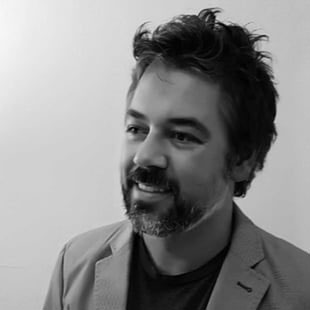
Andy Buchanan (United States)
The End of the Pipeline – Feature Engineering in Animation Pre-production
GenAI animation technology advances with stunning speed. Future genAI tools may deliver a fully controllable AI-animation production toolset, but for now, artists often find themselves wrestling with workflows that can be unpredictable and unsuited for some production tasks. The long-established instrumental modularity of the animation production ‘pipeline’ (1) – especially in the pre-production phase – provides opportunities for targeted AI interventions on specific visual tasks. Implementing these tools requires a certain approach to animation based ‘feature engineering’ (2). This term refers to the identification, extraction and use of the most salient data features within a process. In this presentation, the data in question is the utility information embedded within pre-production elements such as storyboards or concept art that are necessary for downstream production tasks. For example, storyboards contain a wealth of diagrammatic information about screen direction, framing and composition, but may appear as very simple sketches in terms of their graphical style. For this reason, we cannot merely train generative systems to ‘produce storyboards’, as we may produce images that look very much like storyboards, but are not able to function as storyboards. This theme persists across many ‘functional images’ in the pre-production phase such as design references, scene layouts, lighting diagrams, etc. This presentation explores the creation of functional images for animation pre-production, showing the processes and tools involved: using image constraint systems, human-in-the-loop iteration, camera motion controls and the possibilities for future integration of pre-production to final output systems. The theoretical contribution of the presentation is in three key topics: 1. The ability for generative AI to create ‘functional images’ which have downstream informational content beyond their appearance, and the new creative roles this requires (such as animation feature engineers), 2. The broader implication of these changes for the evolving structure of animation pipelines, including the potential dissolution of the ‘pre-production’ phase as a discrete set of tasks and skills, 3. The ethical challenges of feature engineering in this context, as limited or biased content often arises from dataset selection, model training and finetuning, and prompt engineering.
Andy Buchanan is an animation artist and scholar – his published research and internationally exhibited works lie primarily in the area of experimental digital animation, and reflect an obsession with visual metamorphosis and animation philosophy. Current projects focus on the use of generative algorithms and models for animation production, especially where these new technologies offer new visual phenomena and give rise to new forms of thinking, modes of existence and artistic practices.
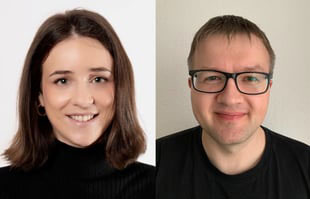
Monica Apellaniz Portos, Claudius Stemmler (Germany)
AniVision: Using AI for Studying Animation Stylistics
imators work in many different contexts. In some, they are the key contributors, credited in ways that allow them to claim authorship of their work. In others, their work receives little or no recognition. The latter category includes so-called ephemeral films, which are nonfiction films produced for a specific, usually short-term purpose, such as educational films, commercials, or public service announcements (Prelinger 2006, Reichert 2009, Cook & Thompson 2019). After serving their purpose, these films often end up in archives, barely noticed by scholars and forgotten by the public. Attempts to remedy this problem have always struggled with both the sheer volume of ephemeral films produced and their relative lack of documentation. This problem is further exacerbated when researching something even more specific, such as animation. As a result, apart from a few high-profile individuals, animators working in ephemeral film have remained comparatively anonymous, unable to claim authorship of their work. In recent decades, however, technological advances have suggested the possibility of improving this situation. First, archives have digitized more of their film holdings, making them more accessible. Second, there have been major developments in the field of artificial intelligence, with tools developed through machine learning showing great proficiency in evaluating data for specific tasks. Encouraged by these developments, animation scholars and computer scientists from the St. Pölten University of Applied Sciences (Austria) and the University of Tübingen (Germany) joined forces in a research project called AniVision. Guided by the motto ‘We make animation visible!’, the digital humanities project AniVision uses machine learning and computer vision to explore a large corpus of ephemeral films produced in Austria, East Germany, and West Germany during the Cold War period. An interactive, computer-assisted approach will be used to investigate stylistic patterns of animation within this corpus. Together with an accompanying database, this will allow us to shed light on forgotten animators and write a more comprehensive history of animation in these countries.
Monica Apellaniz Portos is a Junior Researcher in the Media Computing Research group at the University of Applied Sciences of St. Pölten, Austria. She holds a master’s degree in AI from the Polytechnic University of Madrid, Spain, and has a rich experience in computer vision applied to diverse domains. Currently, she focuses on visual retrieval, and interactive and explainable machine learning.
Claudius Stemmler obtained a B.A. in film studies from the Johannes Gutenberg University of Mainz. Subsequently, he graduated in media studies at Siegen University. Since then, he has worked on his dissertation about Japanese video game designer Hideo Kojima, a project initially funded by a scholarship from Siegen University’s House of Young Talents Postgraduate Centre. Since February 2023, he has been working as an academic researcher in the Institute of Media Studies’ AniVision project.
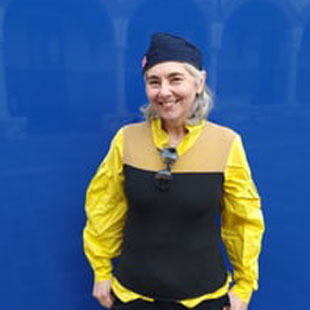
Paola Bristot (Italy)
AI, an Inhuman Perspective but a Diabolical Fascination
The use of virtual techniques called Artificial Intelligence is spreading due to the increased generative potential of computerized systems and connective applications. Its use is observed at different levels, from the medical field to the administrative one, in the financial and economic system and also in the artistic one. The man-machine relationship has been investigated in literature by many authors, and we will mention one example, Alfred Jarry and his famous Supermale. Even animated films have not escaped this operation, and its consequent production. In my opinion, not all artisanal works are to be considered artistic just because they are made manually on ‘analogue’ support; and the opposite is not true either, not all experimentalism that pursues technological innovations will necessarily produce interesting results, classifiable in an artistic context. I would like to analyse some animated short films made with AI that I encountered during the selection process for the Piccolo Festival dell’Animazione: Igor Imhoff’s videoclip Oblivion, Carlo Fusani for TARM’s videoclip La sola concreta realtà, Reinhold Bidner’s Internet Gaga, and Bruit Rose by Ulysse Lefort, Martin Wiklund, Arthur Lemaître. They are very different films, among these Bidner’s one is the most ironic and comical, while the others follow the visions expanded by this generative system. Evidently, there are some cognitive limits of ours related to the achieved results. Our perceptive abilities, those linked to our senses and our brain synapses, are differently hardwired compared to the sophisticated and illusionistic potential of AI. But when guided by those who know well enough what goals the machine should achieve, the effect is that of a fascinating trip albeit a diabolical one at the same time. Perhaps these are the futuristic heralds of the psychedelic genre for films born from classic animated drawings, though lysergic and hypnotic, I can quote, for example, The Yellow Submarine. With AI, a threshold has certainly been crossed, and we are certainly not capable of competing with a machine, like Jarry’s poor cyclist against a locomotive.
Paola Bristot (Aviano, Italy, 1961) graduated in 1985 in the field of Discipline Arti Musica Spettacolo and in 1991 she specialized in Art History at the University of Bologna. In 1995 she became professor of History and Languages of Contemporary Art at the Academy of Fine Arts of Venice and since 2020 she has been Professor in Centro Sperimentale di Cinematografia of Turin. As president of the Viva Comix Association she organizes many exhibitions related to comics, illustration, animation and visual arts. She has been the Artistic Director of the Piccolo Festival dell’Animazione since 2007. She curated the anthology Animazioni in 6 volumes (2010-19, Viva Comix, Ottomani, with A. Martignoni) where more than 100 short Italian films are collected. As Art Director, she produced the experimental film Re-cycling (Arte Video, Viva Comix 2014, and a new version in 2019). She is curator of the ‘studiovivacomix’ in Pordenone where she lives and works.
Organisers:
World Festival of Animated film – Animafest Zagreb
ASIFA Austria
Hulahop Film & Art Production
Organising committee:
Daniel Šuljić, MA, World Festival of Animated Film – Animafest Zagreb
Franziska Bruckner, PhD St. Pölten University of Applied Sciences / AG Animation Vienna
Nikica Gilić, PhD, Prof., Faculty of Humanities and Social Sciences, University of Zagreb
Prof. Holger Lang, Webster University
Prof. Hrvoje Turković, PhD, Prof. in retirement, Academy of Dramatic Arts, University of Zagreb
Andrijana Ružić, Independent Scholar, Università Statale di Milano
With support of:
Croatian Audiovisual Centre
Zagreb Tourist Board
City of Zagreb
The Croatian Film Directors’ Guild
AG Animation / Society for Media Studies
St. Pölten University of Applied Sciences


